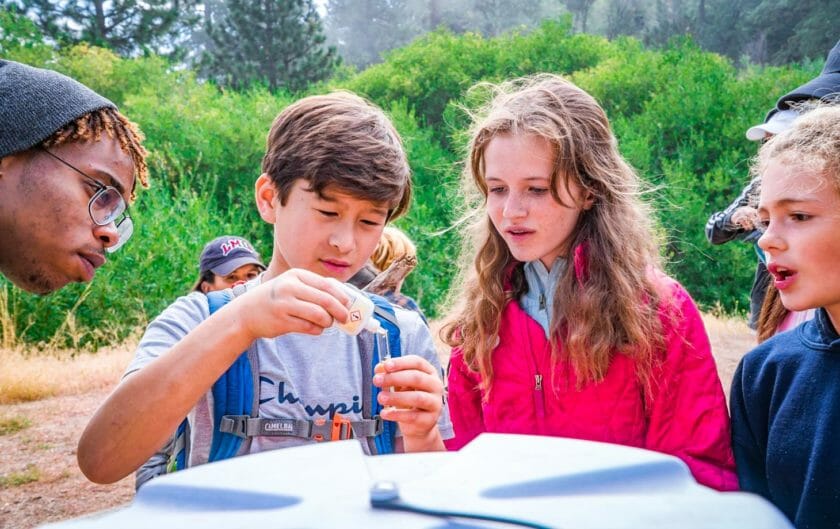An old favorite returns with our recently renovated pond and improved equipment! Students get their fill of experiential science methods – testing the chemical composition of our pond water and assessing its health by ponding for various macro and micro invertebrates. Students then apply their observations and knowledge to the real world and gain an understanding of the importance of water conservation.
What’s Covered
Throughout this class, students engage in a variety of activities centered around one question about Pop’s pond—is this ecosystem healthy? Students use 4 of their 5 senses to make observations about the pond and inquire about this ecosystem, perform a series of chemical tests to check the water quality and go ponding with nets and buckets to explore the biodiversity that Pop’s pond has to offer.
Lessons & Activities
Pond Sit
“A Drop in the Bucket”
Chemical Testing
Ponding
Educational Standards
Applicable Common Core/Next Generation Standards:
- NGSS-MS-ESS2-4: Develop a model to describe the cycling of water through Earth’s systems driven by energy from the sun and the force of gravity.
- NGSS-5-ESS2-2: Describe and graph the amounts and percentages of water and fresh water in various reservoirs to provide evidence about the distribution of water on Earth.
- NGSS-MS-LS2-1: Analyze and interpret data to provide evidence for the effects of resource availability on organisms and populations of organisms in an ecosystem.
- NGSS-MS-LS2-3: Develop a model to describe the cycling of matter and flow of energy among living and nonliving parts of an ecosystem.
- NGSS-MS-LS2-4: Construct an argument supported by empirical evidence that changes to physical or biological components of an ecosystem affect populations.
- NGSS-5-LS2-1: Develop a model to describe the movement of matter among plants, animals, Decomposers, and the environment.
- HS-LS2-2: Use mathematical representations to support and revise explanations based on evidence about factors affecting biodiversity and populations in ecosystems of different scales.
- NGSS-HS-LS2-6: Evaluate the claims, evidence, and reasoning that the complex interactions in ecosystems maintain relatively consistent numbers and types of organisms in stable conditions, but changing conditions may result in a new ecosystem.
- NGSS-MS-LS2-5: Evaluate competing design solutions for maintaining biodiversity and ecosystem services
Ready to Get Started?
Accelerate your students’ learning with our exciting curriculum. Learn more about this hands-on, experiential education activity today.
